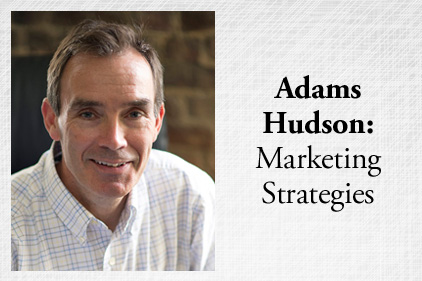The priceless power of publicity
And how to get it for free.


|
| Photo credit: ©istockphoto.com/BrianAJackson |
Publicity is the most powerful form of marketing communication your plumbing company can possibly have. There is a wave of influence in your market, merely waiting to slosh one side or the other. Most watch. Some hope that it visits them. However …
Many try to “create” this wave through paid channels of influence, such as costly advertising and media, signage, trucks and uniforms. The lists — and dollars — are endless. At best, they create a splash of recognition for all this effort and expense.
Yet, below this wave are the relentless forces of nature which govern public perception. In marketing, this force is known as public relations, which, through the use of well-crafted online and offline media releases, can cause thousands of eyes and ears to swivel in your direction, each with a heightened assessment of your company.
The attention and credibility brings customers and sales dollars, pure and simple. How’s this done? You’re about to get a crash course.
You’ve heard these terms before — publicity, media releases and public relations. But you may not know the difference.
Publicity is public recognition
Media releases are the items you send to help gain publicity. And public relations is the organized process to seek free publicity. Did I just say “free?” Well, yes, and that’s not even the best part.
Publicity gives you credibility far beyond the scope of advertising. It puts your message of professionalism and quality service in the hands of an independent authority figure, such as a newspaper reporter or editor. It has been calculated that publicity is worth three times the cost of what the ad space would cost you in sheer credibility.
So, anytime you get publicity, simply multiply the space or time where you’re featured by three, then calculate what an ad of that size would cost. That is the sheer cost approach, but it often bears no relation to the true value.
Many people incorrectly believe that since publicity is free, it either doesn’t work or doesn’t take any work to get done. Actually, both are false. Some public relations firms employ thousands who do nothing but get publicity for companies in an effort to drive customer influence — customer purchases — in their direction (via storefront or website).
The ones who think this is easy merely send in some dumb ol’ piece that brags about the company, in a thinly disguised effort to call it “news.” Understandably, editors fill trash cans and junk folders with these amateur efforts. If they do respond, it is with the often smug request, “If you want to buy an ad, contact the advertising department.”
See, editors — though their salaries are paid by advertising — draw a line between advertising and editorial. When they publicize something, it had better have value to their readers, viewers or listeners.
A media release can cover a variety of subjects, but your informative release positions you and your company as a voice of authority, thus implying supreme credibility and merchant worthiness.
Thus the purpose is two-fold and seemingly at odds:
- Editor’s purpose — News of interest to the audience.
- Your purpose — Public attention or focus on your company.
Clearly, this is a thin, thin line to walk. That’s why crafting a media release is of prime importance. This is your weapon in gaining publicity.
Tips for getting read and published
If you know the name of the reporter or editor, you can address the media release to that specific person. If you don’t, address it to the appropriate title. The general rule for titles in most media organizations is as follows:
- Daily newspapers: City Editor (or Business Editor if it’s company news).
- Weekly newspapers: Editor.
- Magazines: Editor.
- Online newspapers and magazines: Editor.
- Radio stations: News Director.
- Television stations: News Director.
Once you’ve sent the release, resist the temptation to follow up. You will annoy most editors by calling to see if they got your media release.
However, it is perfectly acceptable to include a cover letter from you to say you’re “… available for any information, quotes or other ways to help share worthwhile information with your <readers, viewers, listeners>.”
One of the results of regularly sending your material to the media — regardless of whether it gets published each time — is that you become known as an expert in your field. When industry-related news is in the air, make sure you’re who reporters think of when they need a comment.
Promote your image as an industry expert by offering interviews to radio or TV news programs, book appearances, TV talk shows or radio call-in shows. This doesn’t mean you need to know every single thing about the field. It simply means you need to be accessible and able to deliver interesting, useful information in easily understood sound bites.
The point is to gain a good number of incoming leads and sales for the overall effect of gaining credibility, customers and profits as a result. So, no more waiting around. Go get some free publicity, before your competition does!
HELPFUL LINKS:
Looking for a reprint of this article?
From high-res PDFs to custom plaques, order your copy today!






